We all know iron is important—it’s what keeps our blo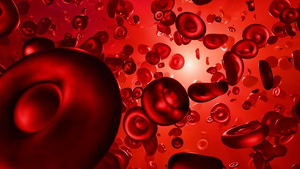 od healthy and our energy up. But here’s something that might surprise you: when it comes to iron, more isn’t always better. In fact, too much iron can be just as problematic as too little, especially for your brain. Let’s talk about what you need to know to keep your iron levels just right.
od healthy and our energy up. But here’s something that might surprise you: when it comes to iron, more isn’t always better. In fact, too much iron can be just as problematic as too little, especially for your brain. Let’s talk about what you need to know to keep your iron levels just right.
Iron and Your Brain: An Unexpected Connection
Scientists have been uncovering a fascinating link bet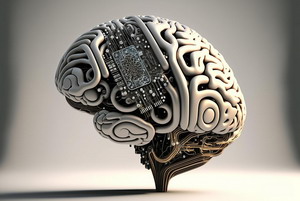 ween iron buildup in the brain and memory problems. As individuals age, iron naturally accumulates in specific regions of the brain responsible for memory and motor functions. A little iron there is fine and normal. However, when there is an excessive amount, issues can arise.
ween iron buildup in the brain and memory problems. As individuals age, iron naturally accumulates in specific regions of the brain responsible for memory and motor functions. A little iron there is fine and normal. However, when there is an excessive amount, issues can arise.
Think of excess iron like rust on metal. When iron levels get too high in brain tissue, it can create harmful reactions t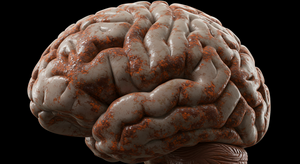 hat damage brain cells. Even more concerning, excess iron seems to encourage the formation of those protein tangles and plaques that show up in Alzheimer’s disease. Studies have indicated elevated iron levels in the brains of individuals afflicted with Alzheimer’s, Parkinson’s, and other memory disorders.
hat damage brain cells. Even more concerning, excess iron seems to encourage the formation of those protein tangles and plaques that show up in Alzheimer’s disease. Studies have indicated elevated iron levels in the brains of individuals afflicted with Alzheimer’s, Parkinson’s, and other memory disorders.
What makes this especially tricky is that unlike other parts of your body, your brain has a hard time getting rid of extra iron once it’s there. It’s like a one-way street—iron goes in, but doesn’t come out easily. This is why keeping iron balanced from the start matters so much.
Where Does Your Body Keep Iron?
Most people think iron is just in their blood, but you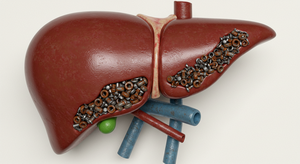 r body actually has several storage spots. Your liver is the main warehouse, holding about 60% of your stored iron in a special protein called ferritin. Think of ferritin like a safe deposit box—it can hold thousands of iron atoms and keep them from causing trouble.
r body actually has several storage spots. Your liver is the main warehouse, holding about 60% of your stored iron in a special protein called ferritin. Think of ferritin like a safe deposit box—it can hold thousands of iron atoms and keep them from causing trouble.
Your spleen and bone marrow also store iron, especially iron that’s being recycled from old blood cells. And here’s 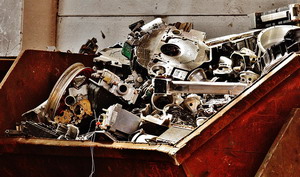 something cool: your body is actually amazing at recycling! Every day, your body recycles about 20-25 times more iron than you eat. It’s one of nature’s best recycling programs.
something cool: your body is actually amazing at recycling! Every day, your body recycles about 20-25 times more iron than you eat. It’s one of nature’s best recycling programs.
But iron can also build up in places where you don’t want it—your heart, pancreas, and yes, your brain. In people with iron overload, excess iron can deposit in any of these organs and cause problems over time.
How Much Iron Do You Really Need?
Here’s the good news: you don’t need much iron from food at all. Adult men and women past menopause need only a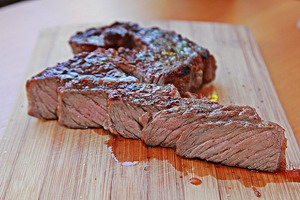 bout 8 mg per day—about as much as in 10 ounces of meat. Fortified cereals will have high amounts of iron, but it is a type of iron that is very hard to absorb. Women who are still menstruating need more (about 18 mg) because of monthly blood loss, and pregnant women need even more to support their growing baby.
bout 8 mg per day—about as much as in 10 ounces of meat. Fortified cereals will have high amounts of iron, but it is a type of iron that is very hard to absorb. Women who are still menstruating need more (about 18 mg) because of monthly blood loss, and pregnant women need even more to support their growing baby.
Why so little? Remember that amazing recycling program we mentioned? Your body reuses almost all its iron, so you only need to replace tiny amounts lost through normal daily activities like shedding skin cells.
The iron in meat, chicken, and fish is absorbed really well—your body can take in about 15-35% of it. The iron in plants (like beans and spinach) is tougher for your body to absorb—only about 2-20% makes it through. This is why vegetarians need to eat more iron-rich foods.
Here’s a fun fact: vitamin C helps your body absorb iron better (which is usually good), while tea, coffee, and wine actually reduce iron absorption (which can be helpful if your iron is too high).
Can You Get Too Much Iron from Food?
This is where it gets really interesting. Can eating lots  of iron-rich foods actually cause iron overload? For most people, the answer is reassuring: probably not. Your body has a built-in thermostat that senses when you have enough iron and automatically reduces how much you absorb from food.
of iron-rich foods actually cause iron overload? For most people, the answer is reassuring: probably not. Your body has a built-in thermostat that senses when you have enough iron and automatically reduces how much you absorb from food.
Even if you’re eating steak every day and taking vitamin C, a healthy body will dial down iron absorption when your stores are full. Your intestines have limits on how much they can absorb, no matter what you eat.
However, it is crucial to acknowledge that alcohol sign ificantly impacts the body’s iron regulation system. Excessive alcohol consumption disrupts the body’s iron thermostat in several ways. Firstly, it damages the intestines, allowing for increased iron absorption. Secondly, it disrupts the signals that normally signal the body to cease iron absorption. Lastly, it strains the liver, which is responsible for regulating various bodily functions. Notably, the combination of alcohol and iron exacerbates liver damage, resulting in more harm than either substance alone.
ificantly impacts the body’s iron regulation system. Excessive alcohol consumption disrupts the body’s iron thermostat in several ways. Firstly, it damages the intestines, allowing for increased iron absorption. Secondly, it disrupts the signals that normally signal the body to cease iron absorption. Lastly, it strains the liver, which is responsible for regulating various bodily functions. Notably, the combination of alcohol and iron exacerbates liver damage, resulting in more harm than either substance alone.
There are real cases of people developing iron overlo ad from chronic heavy drinking, even without any genetic issues. The other big factor is your genes. Some people (about 1 in 200-300 of Northern European descent) have a genetic condition called hereditary hemochromatosis. If you have this, your body’s iron thermostat is broken—it can’t tell when you have enough, so it just keeps absorbing iron. People with this condition can absorb three to four times more iron than normal. On a high-iron diet, that extra iron builds up fast.
ad from chronic heavy drinking, even without any genetic issues. The other big factor is your genes. Some people (about 1 in 200-300 of Northern European descent) have a genetic condition called hereditary hemochromatosis. If you have this, your body’s iron thermostat is broken—it can’t tell when you have enough, so it just keeps absorbing iron. People with this condition can absorb three to four times more iron than normal. On a high-iron diet, that extra iron builds up fast.
Warning Signs to Watch For
How do you know if iron might be building up? Here are some things to watch for:
Feeling tired all the time for no clear reason
Achy joints, especially in your hands
Belly pain or liver problems
Skin that looks bronze or grayish
Loss of interest in sex
Heart issues that seem to come out of nowhere
Memory or thinking problems
If you are an alcoholic or have family members with liver issues, it is advisable to consult your doctor about checking y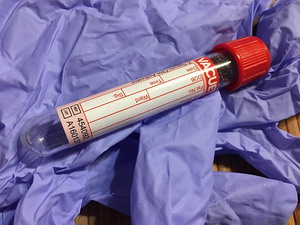 our iron levels. The main tests are simple blood tests: ferritin (which shows how much iron you’ve stored) and transferrin saturation (which shows how much iron is in your blood). When both are high, it’s time to dig deeper. A genetic test can then tell you if you have hereditary hemochromatosis.
our iron levels. The main tests are simple blood tests: ferritin (which shows how much iron you’ve stored) and transferrin saturation (which shows how much iron is in your blood). When both are high, it’s time to dig deeper. A genetic test can then tell you if you have hereditary hemochromatosis.
The Fix Is Surprisingly Simple
Here’s more good news: iron overload is really treatable if you catch it early. The main treatment is wonderfully s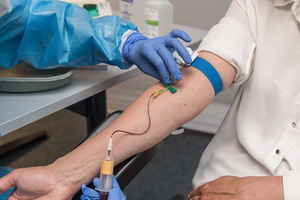 imple—donating blood. Seriously! Doctors will have you donate blood regularly (usually weekly or every other week) until your iron levels come back down to normal. This might take several months to a year, but it works great. Once your levels are good, you just donate blood every few months to keep things stable. It’s easy, it’s cheap, most people handle it fine, and your blood can even help other people.
imple—donating blood. Seriously! Doctors will have you donate blood regularly (usually weekly or every other week) until your iron levels come back down to normal. This might take several months to a year, but it works great. Once your levels are good, you just donate blood every few months to keep things stable. It’s easy, it’s cheap, most people handle it fine, and your blood can even help other people.
If you can’t donate blood for some reason, there are medications that bind to iron and help your body get rid of it, th ough these are a bit more complicated.
ough these are a bit more complicated.
You can also help yourself with some diet tweaks: skip iron supplements (unless your doctor says otherwise), go easy on red meat and liver, take vitamin C pills away from meals rather than with them, have tea with your food, and most importantly, cut back on alcohol.
What This Means for You
The takeaway here is simple: iron is essential, but bala nce is everything. Most people don’t need to worry about getting too much iron from food unless they have that genetic condition or drink heavily. But it’s worth being aware.
nce is everything. Most people don’t need to worry about getting too much iron from food unless they have that genetic condition or drink heavily. But it’s worth being aware.
If you eat a lot of meat, have family members who had iron problems, or drink alcohol regularly, consider asking your doctor for a simple iron test. It’s just a blood draw, and it could give you really valuable information.
Catching iron overload early can prevent serious problems down the road—damage to your liver, heart, and yes, even your brain. The treatment is simple and effective, and knowing your iron status gives you one more way to take charge of your hea lth.
lth.
Your body does an incredible job managing iron on its own. Understanding your personal iron story—through a simple test and awareness of how your lifestyle affects it—helps you work with your body to keep everything balanced and running smoothly for years to come.
Take care,
David
Ellen
We took a little break from all the work lately, and had lunch at Chili’s last Sunday. We should have timed that better, as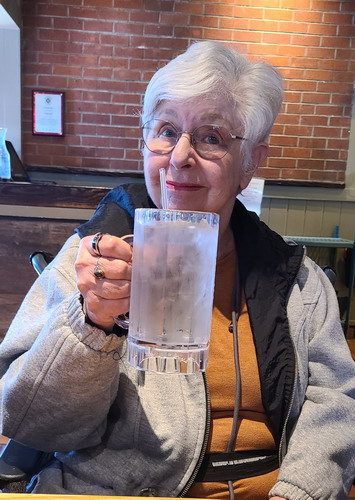 the place was packed and I could barely hear Ellen over the noise. Ellen had her favorite Southwest Salad and I had my favorite, Baby Back Ribs. Afterwards we rolled across the parking lot to go to Trader Joe’s to pick up some yummy goat milk gouda!
the place was packed and I could barely hear Ellen over the noise. Ellen had her favorite Southwest Salad and I had my favorite, Baby Back Ribs. Afterwards we rolled across the parking lot to go to Trader Joe’s to pick up some yummy goat milk gouda!
Kimchi for health

How about a superfood that lowers blood glucose, blood pressure, and cholesterol? That would be kimchi – fermented Napa cabbage with garlic and red pepper. This wonder food is also super good for your gut health, as it provides useful good guy gut bacteria as it ferments.
More
___________________________
“Principle of willingness and surrender. You can not move if you first do not give up where you are. Willingness to surrender the parts of your identity story that are not working for you is the first step to change.“
~David DeLapp
_____________________________________
Cruciferous veggies for blood sugar
A recent study compared eating 4 servings (1 1/2 cups)
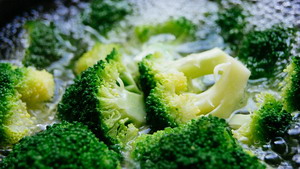 of cruciferous veggies a day compared to root veggies and squash. The cruciferous veggies stabilized blood sugar while the root veggies did nothing. These veggies are already known for helping prevent colon cancer and reducing blood pressure. of cruciferous veggies a day compared to root veggies and squash. The cruciferous veggies stabilized blood sugar while the root veggies did nothing. These veggies are already known for helping prevent colon cancer and reducing blood pressure.
More
____________________________
“Principle of humility. Recognizing that your needs are the same as everyone else allows for balanced and even exchanges that are mutually beneficial.“
~David DeLapp
________________________________________
UV light inactivates airborn allergens
New research has shown that short wave UV light quickly breaks down airborn allergens. UV222 lights have been used for years to kill microbes, so this finding with allergens offers a new way to help folks with allergy symptoms. breaks down airborn allergens. UV222 lights have been used for years to kill microbes, so this finding with allergens offers a new way to help folks with allergy symptoms.
More
________________________
“Principle of optimism. Focusing on and building more of what you like works better than focusing on trying to stop what is wrong.“
~David DeLapp
|

